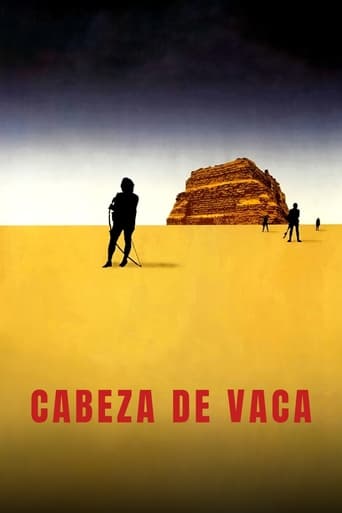Aristides-2
Director/co-writer Nicolás Echevarría profoundly missed an opportunity to make this otherwise flawed film memorable by failing to let the sub-titles (in English for this viewer) mirror de Vaca's gradual understanding of the language he learned as an 8 year captive. The indigenous people were shown to be of a different-than-Western civilization; extremely different in cultural day to day living. But he learned how to speak and hear them, understand them. By sharing his gradual ability to think like them, with us the audience, we too could have seen their being 'foreign' gradually change into kinship . This would make the ending of the movie, as the Spanish conquistadors force the people into slavery, misery and premature death, much more effecting. As it is it's solely de Vaca's humanity that cries from the screen instead of the humanity of the people we should have learned to know as individuals, as well as his.
paullyons-1
The first review is right-on. Read the original text and one comes away with a different story. The actual name of the book is "La Relation", meaning The Relation and is but a report to the King of Spain. Hunger was so much a part of the story, which is represented well, but more interesting is probably the concept that a mixed racial group of people, three Catholics and and African, were interacting with the locals and they were in some respects taken in. I wonder more about the relation between these four surviving members. I just think that it is ironic, considering present day politics, the make up of the Cabeza de Vaca party.www.pelicancafe.net
cynandtie
Amazingly weird (or weirdly amazing?) movie of an odyssey of Spanish conquistadores through Central America 1582. Beautiful images, unseen collection of freaks and outcasts, strong and sometimes disturbing episodes. The plot has a few flaws, but this is a visual movie:Werner Herzog meets Fellini in the Mexican jungle, definitely worth seeing.
peter-209
One chapter of the conquista - the subjugation of the Native American peoples by Europeans. We follow Alvaro Nunez Cabeza de Vaca's adventures and misadventures in the New World from a crash landing of his ship through his saving and capture by the Indians, his forced immersion into the Indian culture, his almost mystical pilgrimage from Florida through the American Southwest to California (or was it Mexico?), up to the bitter end at the hands of his European compatriots. Spectacular visuals lend the film the power of myth, but this is still more realistic depiction of the tragic clash of the cultures in the 16th century America than all the Hollywood productions, including Roland Joffe's "The Mission (1986)" (which, by the way, I do like). The only feature film with this topic that I consider equal, or perhaps even superior, is "Jerico (1988)" made by a Venezuelan ethnography professor Luis Alberto Lamata.


